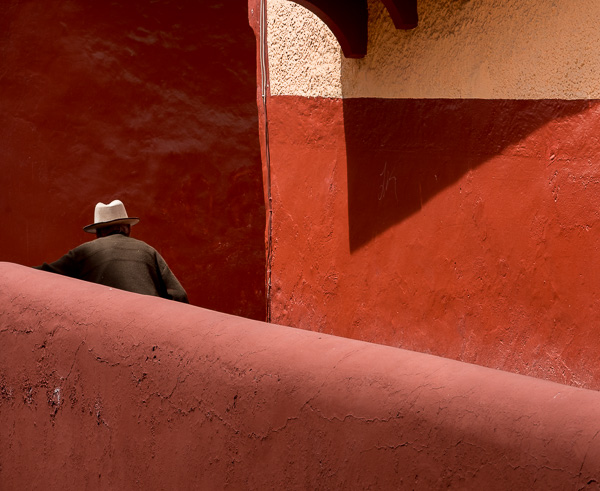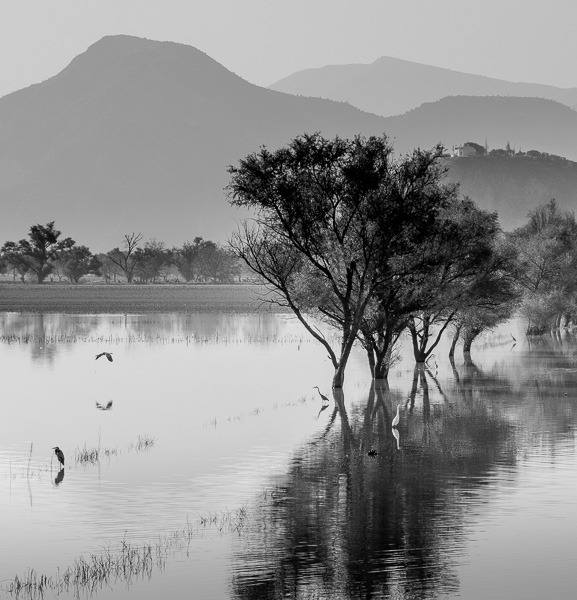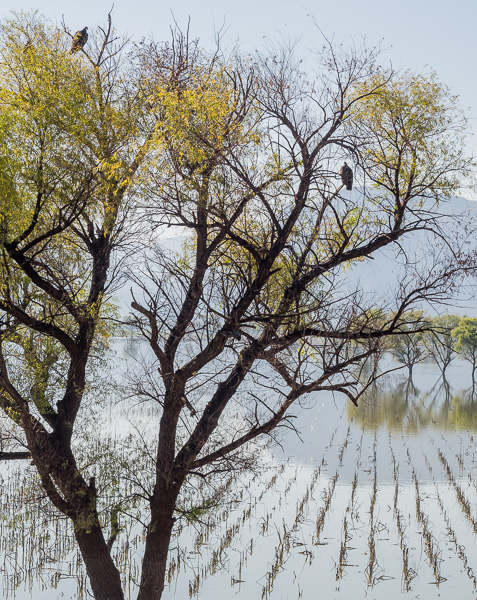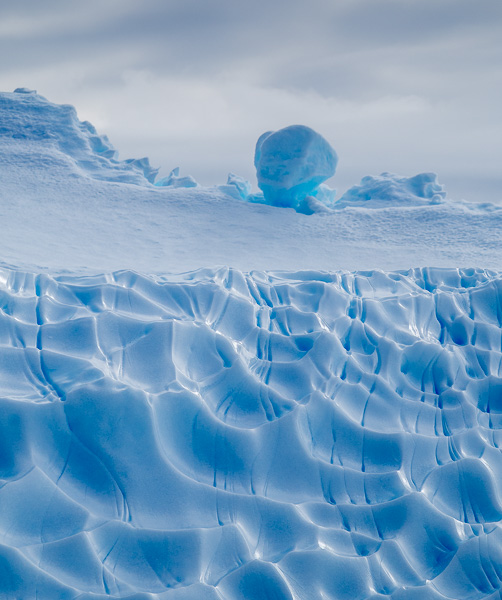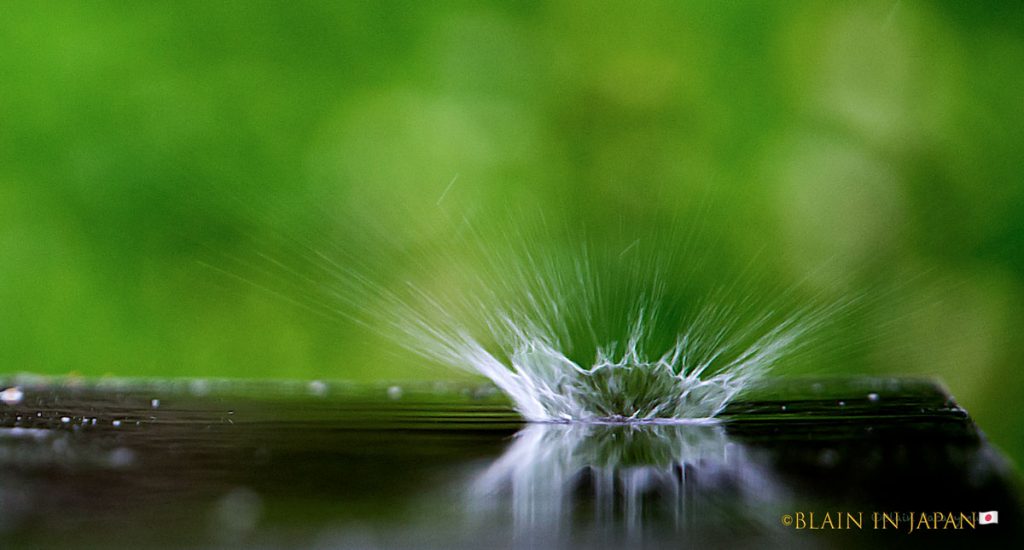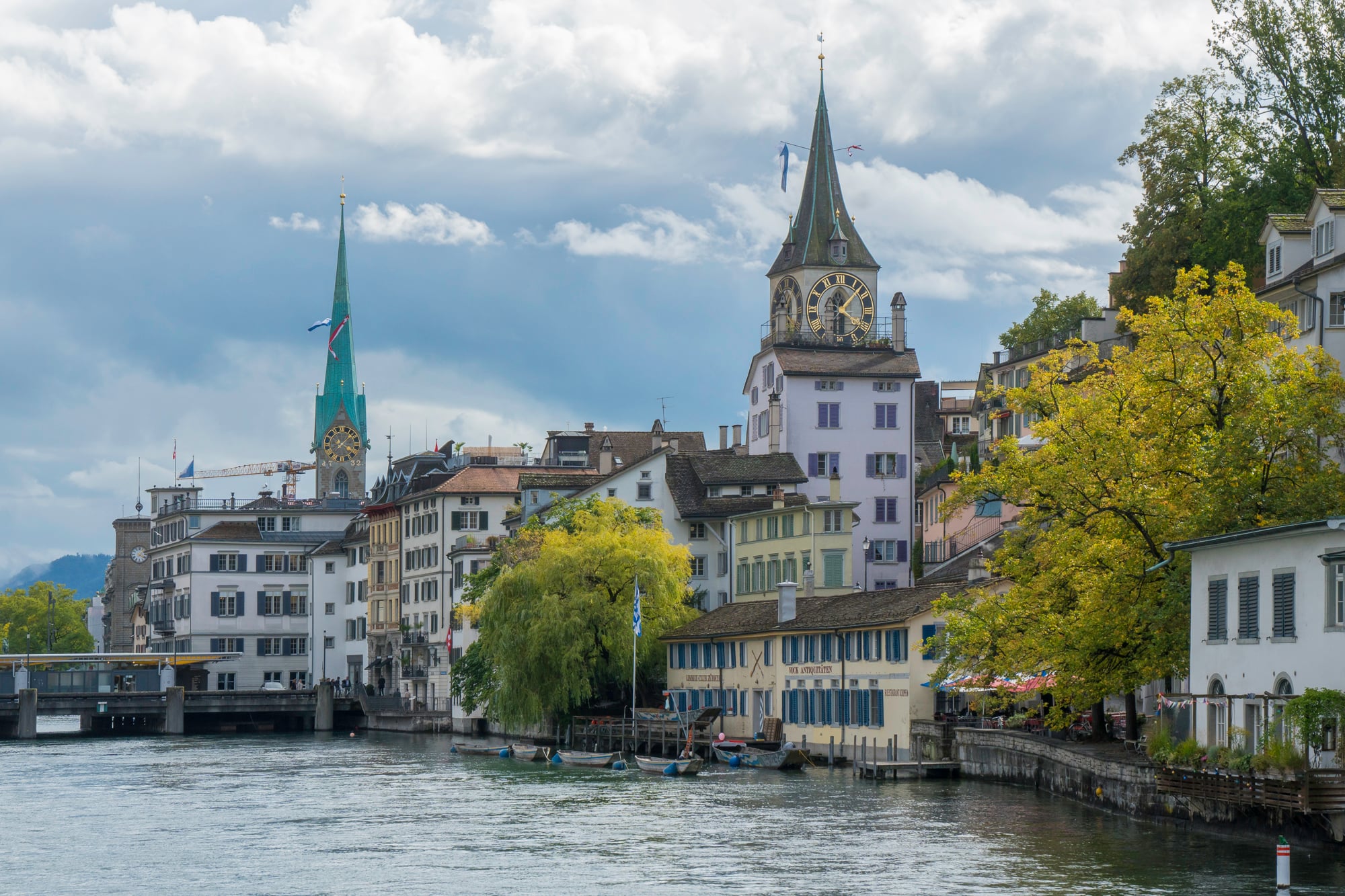
There is a gaping hole in the spectrum of cameras currently available to serious photographers. Digital point-and-shoots flourish like weeds, and DSLRs continue to get better and less expensive. The hole though is found at the price / feature point where photographers need less than a DSLR and more than a simple digicam. Such a camera needs to offer good image quality, decent megapixel count, a high spec lens, fast aperture, clean medium-high ISO noise characteristics, decent handling, and an optical viewfinder. It also needs to provide raw capability.
The new Canon G7 meets most of these characteristics quite well but misses being a truly desirable camera because of its lack of raw capability. Why Canon has decided to remove raw from all of its new non-DSLRs is a mystery. It likely has been done so as not to cannibalize sales from the higher margin DSLR segment, but one really has to wonder at the marketing logic of this approach.
But, I’m getting ahead of myself. Before I launch into a rant, let’s look at what the G7 does offer, and what it does well – which is quite a lot.
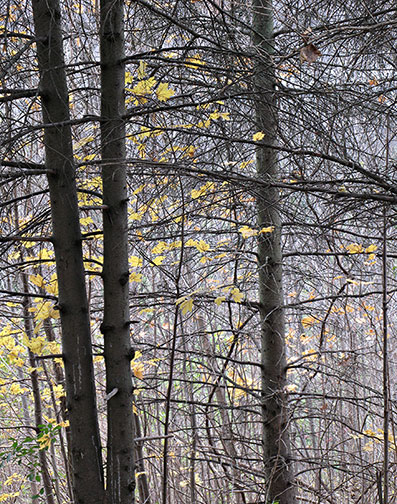
Yellow Splash. Toronto. October, 2006
Canon G7 @ ISO 200. (1/60 sec..f/4. 125mm equiv)
______________________________________________________________________
The Sum of Its Parts
NB:This is not a laundry-list of the G7’s specs and features. Like most contemporary digicams it is loaded with some useful features and also a wide range of relatively useless ones. I refer you to sites such asDPReview, which feature comprehensive recitations of camera specs. This review will only concentrate on this features which in my opinion contribute to the G7’s appeal to photographers looking for a serious small camera suitable for documentary, travel and street shooting.
Weighing in at just 320g (11.3 oz) the G7 is small and light enough to be considered a pocket camera, but not so small as to defy comfortable handling, even with gloves on. One of the first things that you’ll notice when picking one up is its metal construction and solid quality feel.
The second thing that you’ll notice is that in addition to the 2.5 " LCD screen there is an optical viewfinder. No, this isn’t a poor-man’s Leica, but the viewfinder is quite usable for framing (though only showing 80% of what’s captured), and it zooms with the lens. It also has a diopter adjustment. Since the number of digicams that have optical viewfinders is shrinking daily, that the G7 offers one is a real plus, and puts it into the category of cameras worthy of attention by serious photographers. The reason being, that I at least find doing any sort of photography other than family snapshots with a camera held at arms-length to be unacceptable. This is the worst position from a steadiness point of view. It also makes what you’re doing totally obvious to others, and it’s difficult to compose on a screen which might have bright sun or reflections. Nope, sorry. Not for me.
The G7’s LCD’s major downside is that unlike the screens on its G series predecessors it isn’t articulated. This may have been done to keep cost and weight down, but for discrete shooting the ability to hold the camera at waist level can be an asset, and I’ve enjoyed using digicams that have this feature. I won’t mark the G7 down too much for this though, as the presence of the optical viewfinder compensates considerably by pushing the G7 up the goodness scale.
The sensor is a 10 Megapixel CCD of 1/1.8" size, offering speeds from ISO 80 to 1600. One of the camera’s unique features is that the ISO settings are directly available on a top-panel mounted dial, just the way that shutter speeds used to be. There is also an Auto position where the camera will set the most appropriate ISO depending on the other exposure variables.
Child at Demonstration. Toronto, October, 2006
Canon G7 @ ISO 200. (1/125 sec..f/5.6. 210mm equiv)
The camera’s lens is a 6X zoom that retracts fully into the camera body, and which is self-capping. The focal range is 7.4 – 44.4mm, which is equivalent to 35mm – 210mm in 135 terms. The aperture is f/2.8 at the wide end and f/4.8 at the long end. Both autofocus and zooming (done with a lever surrounding the shutter release) are reasonably quick, about as fast as I’ve yet seen from any digicam. (In others words, slow by DSLR standard, but acceptable). But as with all such systems the zoom doesn’t have discrete enough positions, and finding the exact framing that you want can be problematic.
The camera features optical lens IS (Image Stabilization), a built in flash, and a flash hot shoe offering full automation with Canon external flash guns such as the 220EX, 430EX, and 580EX. Shutter speeds range from 15 seconds to 1/2,500 sec. Shooting speed is 2FPS with autofocus set only for the first frame, and 0.8 FPS with autofocus active for each consecutive frame. At either setting it will shoot continuously until the card is full, being able to write to the buffer and card fast enough so as not to block continuous shooting.
There are many other features which I won’t get into here. These include a movie mode, face recognition technology, sound recording, Pictbridge direct printing, and more customizable JPG settings than you can shake a self timer at. But, did I mention that there’s no raw mode?
Then there’s the lack of a battery meter. Who at Canon thought that this was a good idea? Then again, no current Canon digicam has this, just as none have raw mode any longer. Doesn’t Canon want us to buy their cameras?
And speaking of things missing, there is no ISO information visible in the camera file’s EXIF information. I’ve looked at the JPGs with Photoshop, Adobe Bridge, and Lightroom, but see no ISO data. Photo Mechanic reports totally erroneous data for this field, so clearly ISO is not being placed in its normal position. When I contacted Canon about this I was told that they didn’t regard it as an issue because the shooting ISOwasvisible in Canon’s Zoombrowser (Windows) and ImageBrowser (Mac). How open-standards of them! Why Canon would decide to move ISO information from its normal position in the EXIF data fields to somewhere proprietary is anyone’s guess. Thanks Canon. Now we have to run an otherwise useless program just to see what the ISO of a shot was. Sigh. I just don’t get it.
______________________________________________________________________
Noise
The Achilles heel of small sensor digicams till now has been their poor noise characteristics at high ISO, Usually at ISO 200 and above they become too noisy for anything except snapshots, or have to be run through specialized noise reduction software if A4 or larger prints are needed. The Canon G7 breaks this paradigm.
At a peace demonstration on a mostly dreary October day I found myself shifting back and forth between ISO 200 and 400. When reviewing the resulting image files I found little to choose between them. For the first time with a digicam I was able to shoot at ISO 400 and not regret it.
The camera’s 10MP sensor produces a 3648 X 2736 pixel image. This will produce an 11.4" X 15.2" print at 240 ppi output resolution – enough for a double page spread in a magazine, and most other purposes, as long as significant cropping isn’t required.
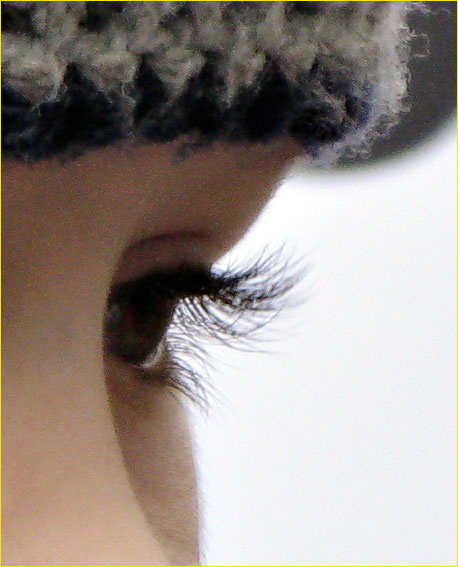
Figure 2
100% crop of Fig 1 above. ISO 200. No noise reduction applied
The 100% crop in Fig 2 above is from the ISO 200 Fig.1 image at the top of the page. I’ll let the lack of noise and excellent resolution of this shot speak for itself. An A3 print of this image is easily mistaken for one from a top-quality DSLR.

Figure 3
Canon G7 @ ISO 400. (1/400sec..f/4. 140mm equiv)
Fig. 3 above is nothing great as a photograph, but it was taken at ISO 400, and representative of the quality that I’m seeing. (Burned out highlights will be discussed separately). This is the JPG straight from the camera. As can be seen in Fig. 4 below, which shows a 100% crop, there is hardly any more noise than in the ISO 200 photograph higher up the page. Really quite remarkable for a camera with a tiny 1/1.8" sensor.
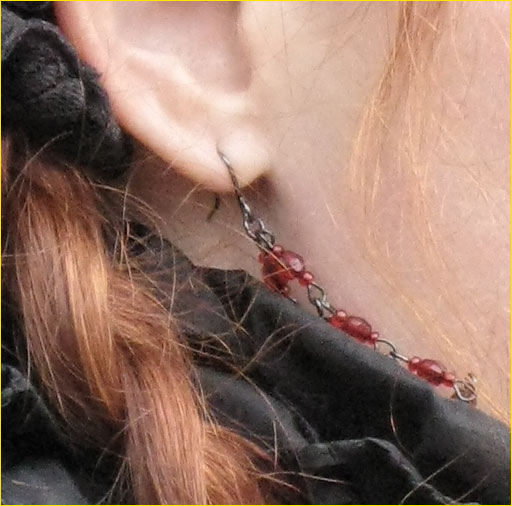
Figure 4
Below are additional shots made at the camera’s various ISO settings, taken on an overcast day. In-camera settings were withMy Colorset toNeutral, normal sharpening, etc. No post processing.
100% crop of Fig 3 above. No noise reduction applied
Below we look at comparisons of the camera’s six sensitivity settings.
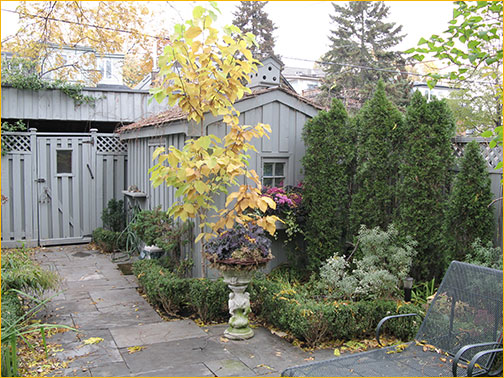
Figure 5
Full frame JPG as shot.
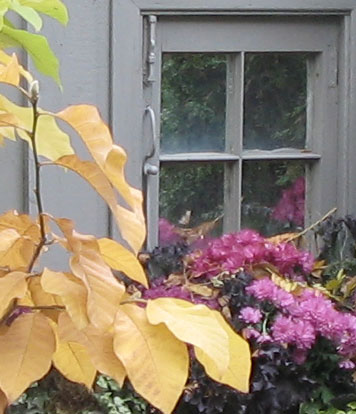
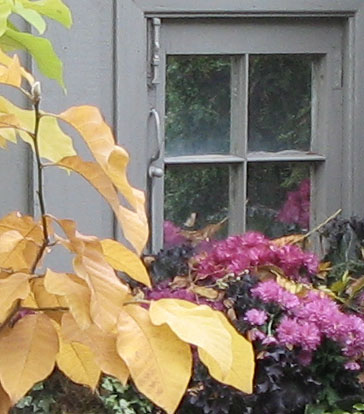
ISO 100
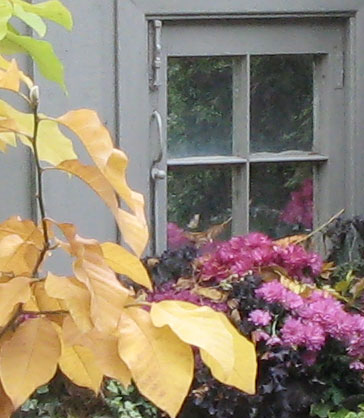
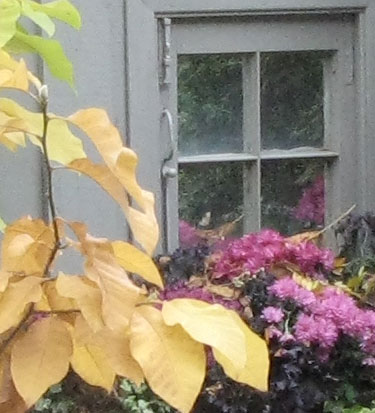
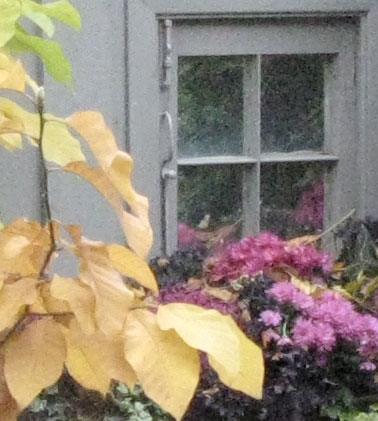

Figure 6
100% crops. As shot.
What I see is that ISO 80 and 100 are essentially identical, though I can sometimes convince myself that 80 shows a bit less detail blurring. ISO 200 is very close behind, and requires no additional noise reduction. ISO 400 is still very clean but does show some slight but noticeable loss of fine detail. ISO 800 is noisy, and ISO 1600 is not usable without some drastic clean-up, and even then will have lost too much detail for many applications.
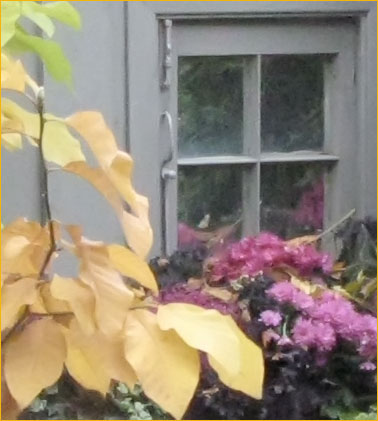
Figure 7
ISO 800 with Noise Reduction
I was curious to see if ISO 800 would be usable with some help, and it was. Fig. 7 above is the ISO 800 frame that has been run throughNoiseware Professional, a Photoshop plug-in. Default automatic settings were used. Remember that this area above is a 100% crop. An A3 print is quite impressive in its lack of noise, though enough fine detail has been lost through noise reduction that this technique won’t work for any image that requires that such detail be held.
The bottom line on high ISO noise is that the Canon G7 is as good as some earlier generation DSLRs, and certainly better than any previous small sensor digicam that I’ve yet seen. Panasonic take note – 10MP digicamscanbe made with low noise.
______________________________________________________________________
Resolution

Wig and Veil. Toronto. October, 2006
Canon G7 @ ISO 200. (1/50sec..f/5.6. 210mm equiv)
It doesn’t require a practiced eye to see from the few samples on this page that the lens on the G7 is remarkably sharp. I did no formal testing, simply a few hundred frames under varying circumstances. What I saw was than the camera’s lens was at its best at the long end of the zoom range, but that even at the wide end it acquitted itself very well. I saw no untoward fringing or other nasties, though in my week of testing I may simply not have yet stumbled across them.
What’s interesting is that my time testing the Canon G7 overlapped with my initial testing period with theLeica M8. Interestingly, both cameras are 10 Megapixel, and so since I was shooting with and making prints from both cameras, with subject matter from the same scenes, the sample prints often became mixed together.
Much as I would like to pretend otherwise, it sometimes was difficult without close examination to be certain which A3-sized print had come from which camera. Yes, a close look would almost always show the G7 files to have a slight "digital" look, while those from the M8 did not, but it was remarkable how well the G7 did. I showed mixed-together prints to several technically knowledgeable and experienced photographers and it took each of them close examination to tell the cameras apart simply from the sample prints, and even then not always. As I said, remarkable image quality (but JPG only).
______________________________________________________________________
In Hand
Since this is not a formal test report (you noticed, huh?) I was more concerned with how the camera performed its intended task as a street and documentary photography camera, rather than pixel peeping it to death. I found that once I had satisfied myself that it was capable of producing reasonably sharp and noise free images under typical shooting situations, I was much more interested in whether or not it was an "appropriate tool" for this type of shooting.
As mentioned, this was complicated by the fact that I was simultaneously shooting with theLeica M8much of the time. It’s hard to be objective about a sub $600 digicam when one is shooting with the ne-plus-ultra of a new breed of high-end digital rangefinders worth literally 10X as much, with lens. Therefore I will not do any comparisons between the two, either from an image quality or handling perspective.
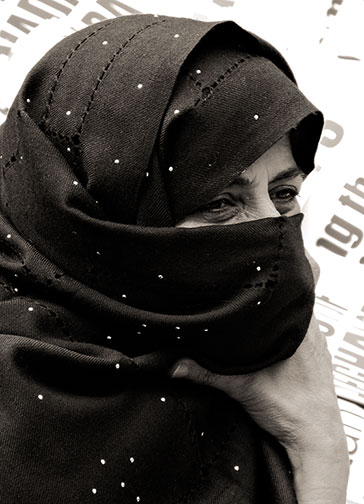
Behind the Veil. Toronto. October, 2006
Canon G7 @ ISO 200. (1/100sec..f/5.6. 200mm equiv)
There’s no getting away from the fact that the G7 is a digicam. Pressing a well recessed button on the top panel turns it on, and the rear LCD lights up and the zoom lens extends. If you have the rear LCD set to "Off", assuming that you’re going to be using the optical viewfinder (the way I usually shoot) I was pleased to note that the screen remained dark, only showing some white text with the camera’s current settings, and this only for a few seconds. The fact that the G7, like most digicams, can operate without any shutter noise is also a real plus for discrete shooting.
In addition to the top panel ISO dial (which I really learned to like) there is the usual mode dial with settings for everything from Aperture Priority, Shutter Priority, Manual, Program, and all the usual extras such as Movie mode. The rear panel doesn’t have the typical profusion of buttons and dials. I only counted six, plus a multifunction scroll wheel. As usual, most of the cameras settings are performed on the LCD screen, while the optical viewfinder has no displays whatsoever.
Autofocus speed is just this side of acceptable. Nowhere near as fast as even the slowest DSLR, but not as bad as some previous generation digicams.
Though not shirt pocket sized, the G7 will fit comfortably in a jacket pocket, and thus is almost ideal as an everyday walk around camera. I decided to take off the neck strap and simply treat it as a pocket camera. Overall, even though I have fairly small hands, I sometimes found the G7 a bit too small. It has appropriate heft for its size, but it straddles the line between being small enough for a pocket and not big enough to handle comfortably with two hands.
______________________________________________________________________
The Verdict
Overall I was very impressed with the Canon G7. It does a lot of things right within the context of its price, size and its likely intended constituency. Unfortunately a consequence of being a JPG-only camera is that too many technical decisions need to be made prior to shooting. Things like colour balance, saturation, sharpening, etc all get baked into the file, and the ability to recover burned-out highlights (which raw files provide) is lost when all you have is a JPG. A good example of this is seen in Fig. 3 which I am reproducing again below.

Figure 3
Canon G7 @ ISO 400. (1/400sec..f/4. 140mm equiv)
The camera’s meter saw the large area containing the black leather coat and other dark parts of the frame and ended up exposing the shot about 3/4 to one stop more than it should have. This was great for retaining detail in the coat, but it totally blew out the highlights on the woman’s forehead. It reads 255, 255, 255. If this had been a raw file it would have likely been quite easy to recover that highlight detail. Similarly, when white balance isn’t set properly, either by the photographer or the camera on automatic mode, with a JPG the range over which this can be corrected is seriously diminished. The colour space of the G7’s JPGs is sRGB, seriously reducing the gamut available, and as 8 bit files any chance of trying to rescue a poorly exposed shot are seriously reduced.
Some people say of cameras such as these –Well, it’s a snapshot camera. Who needs raw mode?Actually, lot’s us us do, whether we realize it or not. A fast 4GB SD card now costs less than $100, so the cost of storage space for raw files is of minimal impact. Hard disk space is under $1 / Gigabyte, so long term storage is similarly of trivial cost. (Plastic slide sleeves cost more per transparency than disk space now costs per digital frame). So, for the reasons listed in the previous paragraph raw mode is important to just about anyone shooting with serious intent.
Canon, for some reason, has decided that none of their current digicams will have raw mode (or battery level indicators, for some strange reason). I can only see this as being contrary to the needs of a large number of photographers. Certainly that’s what I am regularly told by people at my seminars, workshops, and in postings on this site’s Forum.
If the G7 had raw mode, especially if it also had a big enough buffer so that the camera didn’t go into la-la land for 10-15 seconds at a time as so many digicams do when shooting raw, I believe that its usefulness for many street and documentary shooters would be greatly enhanced. Even for someone owning a Leica M8 the Canon G7 would have some appeal as a backup (how many can afford a second M8?) especially with the G7’s reach out to 210mm equivalent, whereas the Leica stops at 90mm.
As it is, the G7 will still have a lot of appeal due to its really good noise characteristics and a sharp lens with a decent focal range. A solid metal body and appealing assortment of additional features such as IS and audio recording contribute to its attractiveness. I don’t know of any current digicam that offers as much quality for the money. That same money will now by you a DSLR with kit lens, but then this won’t fit in your pocket, doesn’t have the same reach, and can’t shoot silently. There is a place for both, regardless of Canon’s apparent fears of cannibalization.
If the G7 had raw mode, I would buy one in a flash. As I wrote in this article’s sub head –It Could Have Been a Contender!
Maybe next year.
November, 2006
______________________________________________________________________
Postscript
After returning the review sample of the G7 to Canon I was faced with a quandary. Other than its lack of raw capability I was quite taken with the G7. It did an awful lot of things well for the type of shooting which I do, and the times and places that I would want to use it. What, if any, were the alternatives?
What motivated me to search them out was an upcoming trip to Morocco for a winter vacation. Because this won’t be a shoot or a workshop I want to travel as light as possible. The newLeica M8will be the ideal travel companion, as M Leicas had been for me for decades. But my lenses stop at 50mm (70mm equiv), and I also don’t have any backup. (No, film is no longer an option when traveling).
A few hours on the Net showed me that there simply isn’t an appealing alternatives to the Canon G7. Some people had suggested the Fuji E900, since it has a viewfinder and raw mode. Unfortunately it has nothing like the G7’s feel, uses those awful xD cards, and takes 6 seconds with no buffer to write a raw file. The lens also falls far short of that on the G7 at the long end.
It appears that pocket-sized digicams with the features that I want – high build quality, optical viewfinder, decent zoom range, relatively fast aperture, good image quality at ISO 400, and raw mode, simply doesn’t exit. Remove raw mode from the equation though and the G7 really does fill the bill.
So, with some reluctance I ended up buying a G7 for my own use. I’ll use the camera for what it can do. This will mean lower ultimate image quality in some situations than if it had raw mode, but if I want something with the features that it has to offer I have no other alternative.
I’m sure that Canon will sell a boatload of G7’s. It’s that good a camera. But based on the emails that I’m getting and the commentary that I’ve been reading online, they could have sold two boatloads if it had raw capability. Since most other manufacturers appear to have abandoned full-featured digicams for DSLRs, except in the super-zoom and credit card sized categories, Canon could have this market to itself if it would reconsider a model with raw capability. So let’s hope that someone in Canon’s product planning is reading this.
Read this story and all the best stories on The Luminous Landscape
The author has made this story available to Luminous Landscape members only. Upgrade to get instant access to this story and other benefits available only to members.
Why choose us?
Luminous-Landscape is a membership site. Our website contains over 5300 articles on almost every topic, camera, lens and printer you can imagine. Our membership model is simple, just $2 a month ($24.00 USD a year). This $24 gains you access to a wealth of information including all our past and future video tutorials on such topics as Lightroom, Capture One, Printing, file management and dozens of interviews and travel videos.
- New Articles every few days
- All original content found nowhere else on the web
- No Pop Up Google Sense ads – Our advertisers are photo related
- Download/stream video to any device
- NEW videos monthly
- Top well-known photographer contributors
- Posts from industry leaders
- Speciality Photography Workshops
- Mobile device scalable
- Exclusive video interviews
- Special vendor offers for members
- Hands On Product reviews
- FREE – User Forum. One of the most read user forums on the internet
- Access to our community Buy and Sell pages; for members only.







